
Transit Briefs: Caltrain, MBTA, Metro-North, Sound Transit, TTC, VIA Rail
Written by Marybeth Luczak, Executive Editor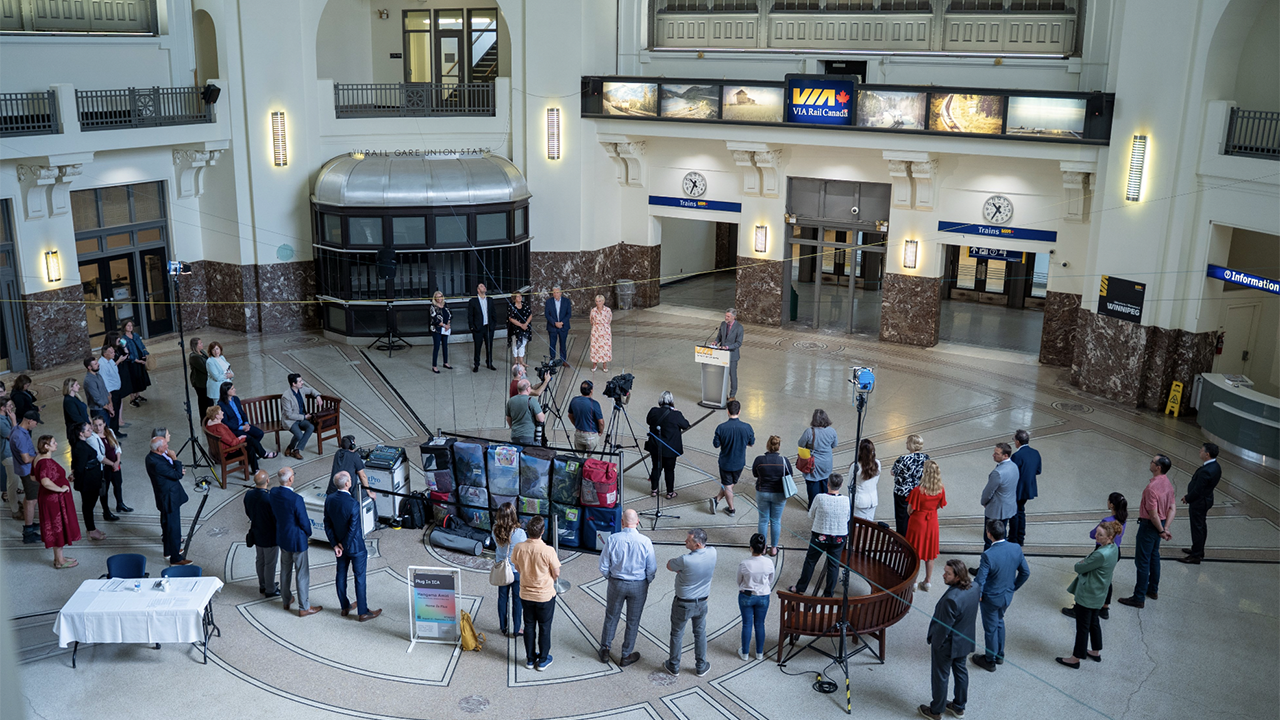
VIA Rail has announced an investment of more than $80 million in the renovation of four of its 36 “heritage” stations: Winnipeg Union Station (pictured), Vancouver Pacific Station, Halifax Station and Gare du Palais in Québec City. (Photograph Courtesy of VIA Rail, via X, formerly known as Twitter)
California’s Caltrain debuts new fare product promotions. Also, Massachusetts Bay Transportation Agency (MBTA) announces its vision to improve safety, service, equity, sustainability and culture; commuter rail service on MTA Metro-North’s New Canaan, Conn., Branch will resume after three months of trackwork; Sound Transit announces the launch date for the Bellevue-to-Redmond, Wash., portion of the East Link light rail extension; Toronto Transit Commission (TTC) confirms that service on Line 3 Scarborough RT (rapid transit) will not restart following a July 24 derailment; and VIA Rail Canada is investing more than C$80 million in four “heritage” stations.
Caltrain

Caltrain on Sept. 1 will introduce four new temporary fare products:
- $1 Youth Pass to provide one-way rides for anyone 18 years old or younger
- Three Day Pass to provide unlimited rides for three days immediately upon purchase (including the day of purchase), which is an option for the “hybrid commuter” working three days per week.
- Family Day Pass to allow two adults and up to four people 18 years old and younger to ride together in the same train car for the cost of two adults and one young person (18 or under).
- Group Day Pass to allow four to six people in the same fare class (Adult, Youth, Eligible Discount) to travel together in the same train car for 15% off the cost of four tickets.
The commuter railroadZ—which runs along the San Francisco Peninsula, through the South Bay to San Jose and Gilroy—said it is also reducing the price of parking at stations by 50% starting Sept. 1.
Caltrain’s ridership continues to increase, with the average weekday ridership currently at approximately 20,000 per weekday, according to the railroad, which said the latest survey data “show opportunity for even greater growth by modifying prices.” According to Caltrain, by providing a wider range of fare products, it can “better appeal to the needs of potential riders and their changing travel patterns.”
Caltrain is due to launch electrified service in fall 2024, which is two years later than planned. The railroad’s $2.4 billion electrification project will upgrade and electrify its double-track system from the 4th and King Station in San Francisco to the Tamien Station in San Jose. Stadler-built KISS bilevel EMUs will replace Caltrain’s existing diesel fleet. Caltrain awarded Stadler a $551 million contract in August 2016 for 16 six-car EMUs, with an option for a further 96 cars worth an additional $385 million. In December 2018, Caltrain exercised an option to extend the trains from six to seven cars, and ordered another three seven-car trains. Caltrain has received four EMUs with further deliveries expected this fall. Caltrain on Aug. 17 reported that its Board has approved exercising options on its contract with Stadler for four more EMUs.
MBTA
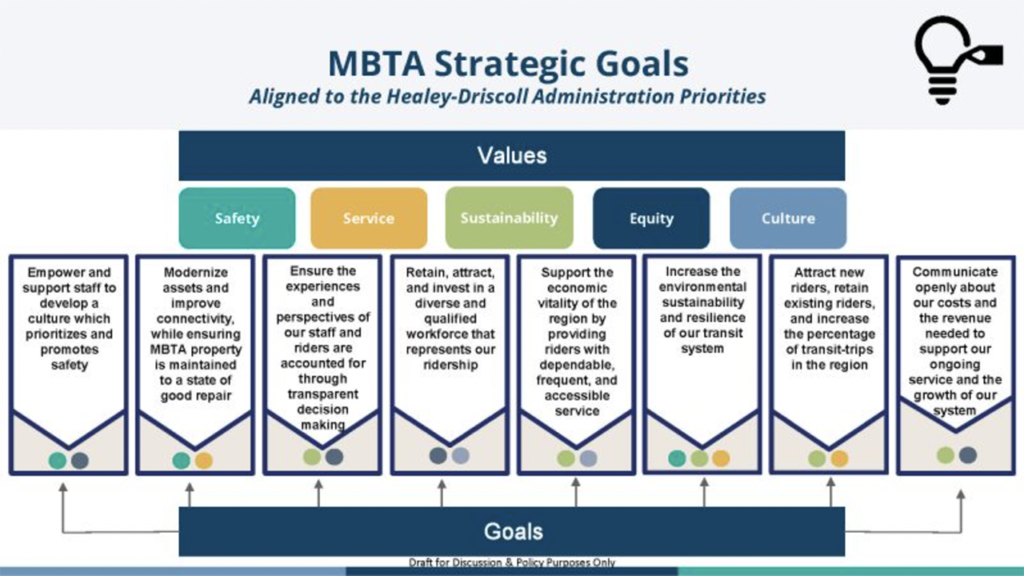
MBTA General Manager and CEO Phillip Eng and Assistant General Manager Lynsey M. Heffernan on Aug. 24 announced the agency’s values, goals, and metrics to improve safety, service, equity, sustainability, and culture, which they said build on their mission to provide accessible and reliable transportation.
The goals—developed through a collaborative process with MBTA staff and stakeholders—are:
- “Empower and support staff to develop a culture which prioritizes and promotes safety.
- “Modernize assets to improve connectivity while ensuring MBTA property is maintained to a state of good repair.
- “Transparent decision-making to ensure the experiences and perspectives of our staff and riders are accounted for.
- “Building a diverse and qualified workforce to retain, attract, and invest in a diverse and qualified workforce that represents our ridership.
- “Support regional vitality by providing riders with dependable, frequent and accessible service.
- “Increase environmental sustainability to build the sustainability and resilience of our transit system.
- “Increase the percentage of transit trips in the region by attracting new riders and retaining existing riders with a dependable, frequent and accessible service.
- “Communicate openly about our costs and the revenue needed to support our ongoing service and the growth of our system.”
According to MBTA, the development of metrics for tracking progress toward these goals will be finalized in the coming months.
The agency said that in recent months it has made following achievements that are aligned with its values, goals and metrics:
- A contract agreement with Local 589, which provides staff with “wage increases, improved benefits and job security.”
- Amplified hiring efforts, which MBTA said are helping to address staffing shortages.
- Ferry service expansion.
- The advancement of the DEI Employee Advisory Council, which MBTA said amplifies “the voices of staff” as the agency “sets a new path forward.”
In addition to its goals, MBTA also announced near-term actions that it is taking to align its current operations with its goals. These actions include:
- Refining the Capital Investment Plan scoring process to ensure that all CIP projects help advance the agency’s goals.
- Finalizing agency-wide metrics and a high-level dashboard to assess progress and set benchmarks and targets.
- Developing a Workforce Culture assessment “to ensure that the agency is taking action to create a culture of safety and inclusion with a focus on hiring needs across all departments, including assessing collective bargaining where necessary.”
- Meeting the agency’s environmental goals through the development of sustainability planning.
- Building the agency’s goals into the performance management system for leadership.
- Teaming with the Office of Transportation Planning on required programs such as the next Program for Mass Transportation, which provides a public process for stakeholders to weigh in on the costs and trade-offs of potential long-term investments.
“Thanks to input from MBTA employees and our valued partners within transportation advocacy organizations, we have new strategic goals which underscore our commitment to improving the MBTA to make it safer, more reliable, resilient, and equitable,” Massachusetts Transportation Secretary and CEO Gina Fiandaca said. “We intend to bring a new level of transparency, public engagement, and capital investment to the MBTA, and we will succeed with workforce investments, collaboration, and decisions that prioritize safety.”
“We are committed to providing a safe, reliable, and accessible transportation system for Massachusetts,” Phil Eng said. “We are listening to the feedback of our riders and stakeholders, and we are using that feedback to shape our vision and our roadmap. It is only with them that we can make this mission a reality. We know we sometimes face challenges, but we are confident that we can overcome them. We are committed to making the MBTA a public transportation system that everyone can rely on.”
“We believe these goals will help keep us focused,” MBTA Assistant General Manager for Policy and Transit Planning Lynsey Heffernan said. “We’re serving vibrant and diverse communities with rich history and culture who deserve to be able to rely on us for public transit services. The more in tune we are with our collective vision, the more likely we will be able to deliver on that vision.”
MTA Metro-North Railroad
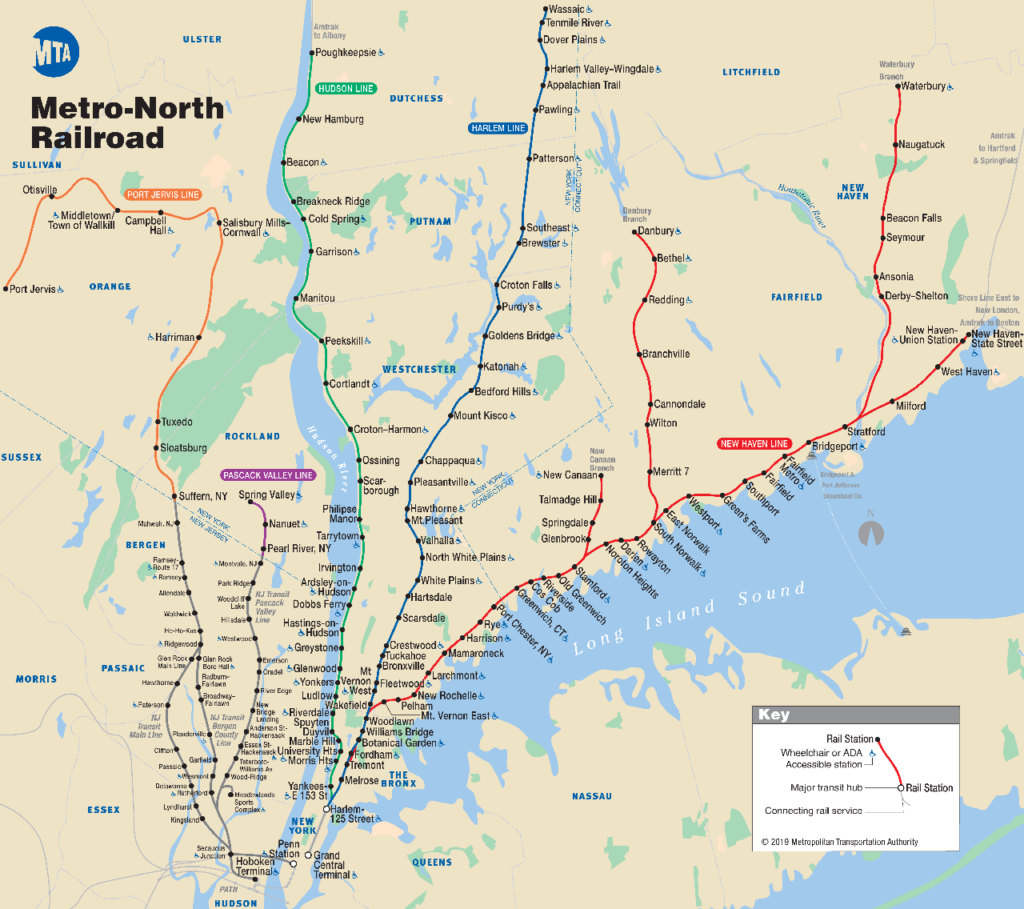
The Connecticut Department of Transportation (CTDOT) on Aug. 23 reported that commuter rail service on the MTA Metro-North New Canaan Branch will resume Sept. 2. Since May 30, a track maintenance and bridge repair project has been under way and buses have been serving branch riders between New Canaan and Stamford, Conn.
In advance of train service restarting, test trains will operate along the New Canaan Branch in both directions to test and inspect the railroad crossings and tracks.
“These infrastructure improvements allow for improved and more reliable service on the New Canaan Branch Line into the future,” CTDOT Public Transportation Bureau Chief Ben Limmer said. “We look forward to welcoming customers back on September 2 as we head into a busy fall season.”
Sound Transit
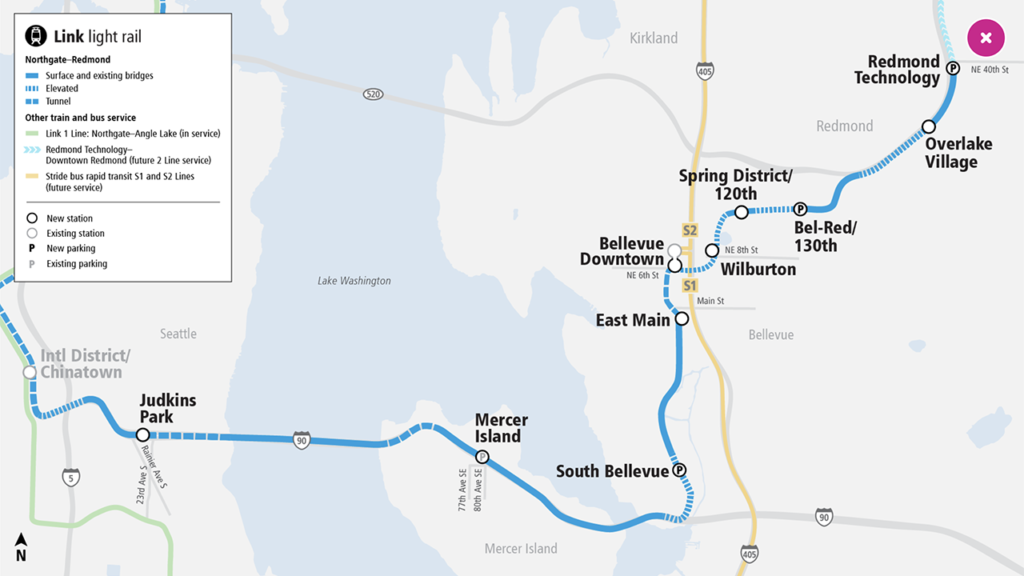
Seattle’s Sound Transit on Aug. 24 reported that the Link 2 light rail line will begin operating between the South Bellevue and Redmond Technology stations in Spring 2024. The Sound Transit Board approved opening the eight-station segment for service prior to completion of the full East Link Extension in 2025 (map above).
Service on the Link 2 line is proposed to run with two-car trains every 10 minutes, 16 hours per day, according to Sound Transit. The final service level will be approved by the Sound Transit Board as part of the 2024 Service Plan, which is expected to be released in October 2023.
According to Sound Transit, the Board’s action included provisions to meet ridership demand on the 1 Line, including maximizing peak-hour service, adding bus service in Snohomish County, and support for Lynnwood riders until the opening of the full East Link Extension.
Sound Transit said it is working with regional transit partners on plans to coordinate the 2 Line opening closely with other spring service changes on ST Express, King County Metro Transit, and Community Transit bus routes. Existing ST Express and King County Metro routes including Route 550, B Line, and other local routes are anticipated to continue operating on their current routes until the full 2 Line opens.
Voters approved the East Link Extension in 2008 as part of the Sound Transit 2 ballot measure. Construction on the project began in 2017, including sequential excavation mining of the one-half-mile Bellevue tunnel, which was completed in 2020. Light rail test trains have been operating across the alignment to test the overhead electrical power system and train signal system, and simulated service is expected to begin in early 2024.
According to Sound Transit, the Board authorized up to $43 million from the existing East Link Extension $3.68 billion budget to fund the activities necessary to open the East Link “starter line” in spring 2024.
“It’s an exciting step to connect more communities via fast, carbon-free Link light rail, and opening these stations on the Eastside is the opening act of the 2 Line,” Sound Transit Board Chair and King County Executive Dow Constantine said. “From Redmond to Bellevue, people have a new option to get to work, school, and all the things that make this community special, and I’m excited to see what’s next when the 2 Line crosses Lake Washington in 2025.”
“Almost exactly one year ago, when we first learned that Eastlink light rail would be significantly delayed due to workmanship issues on the I-90 bridge, I proposed that we open an Eastside-only starter line,” Sound Transit Board Member and King County Council Member Claudia Balducci said. “Today, [Aug. 24] I was pleased that the Board unanimously decided to approve this plan. This pivot from a long-established plan to adapt to changing circumstances is a testament to hard work, creativity and nimble action by agency staff, as well as the overwhelming enthusiasm by cities and community members from across the Eastside who know how transformational these generational transit opportunities will be and how important it is to open them ASAP.”
“This incredible accomplishment required significant commitment and collaboration across the entire Sound Transit Team, with King County Metro that hires for and operates our service, and by our federal, state, and local partners for every required review and approval,” Sound Transit CEO Julie Timm said. “It was seriously hard work to assess and then remove the barriers to accelerate opening of light rail on the Eastside by spring 2024, and there were many moments where it looked like this would be an impossible task in the time available to us. I am proud of the team’s unwavering dedication as Sound Transit continues to make history with the opening of each extension connecting the region through the largest transit expansion program in the country.”
TTC
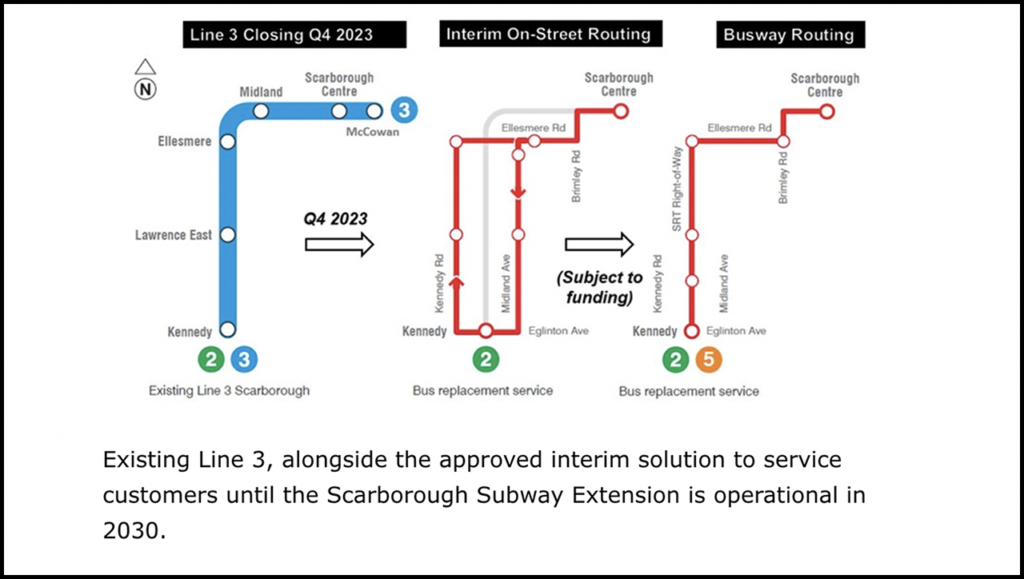
TTC on Aug. 24 confirmed that Line 3 Scarborough RT service, originally scheduled to end Nov. 18, will not restart following a July 24 derailment, and that it is working with the city of Toronto to improve the bus replacement service in advance of back-to-school in September.
Service on Line 3 was suspended following the derailment south of Ellesmere Station and replaced with frequent shuttle bus service. “A comprehensive review, that includes the participation of industry-leading consultants, is still under way,” according to TTC. “However, given the time required to complete the review, the decision has been made to permanently close the line and begin to implement elements of the replacement plan. These measures will improve transit priority and operations, provide frequent, high-capacity bus service and ensure customers can plan their trips online in September.”
TTC contractors, working with the city of Toronto Transportation Services department, on Aug. 22 began the installation of temporary road markings and signage to establish bus-only lanes, TTC said. One curb lane southbound on Midland Ave. and one northbound on Kennedy Rd. between Eglinton Ave. and Ellesmere Rd. will be created. The new shuttle routing will be implemented the weekend of Aug. 26.
The TTC’s Line 3 is an approximately four-mile (6.4-kilometer) intermediate capacity RT line with six stations that opened in 1985. According to TTC, the Scarborough RT trains have been in service 10 years past their 25-year design life, are susceptible to cold weather, and have already been overhauled. In February 2021, the TTC Board approved decommissioning Line 3 train service and directed staff to develop a bus replacement plan. Bus replacement service will operate until the opening of Line 2 East Extension in 2030. Construction is under way by Metrolinx.
“I want to thank TTC and city staff for recognizing the urgency of this matter and taking the necessary steps to ensure that the commute for Scarborough transit riders is as efficient as possible, especially as we prepare to enter the back-to-school season,” said TTC Chair Jamaal Myers (Ward 23, Scarborough North). “Working together to improve the customer experience on the Scarborough RT bus replacement service is what transit riders expect and what they deserve.”
“We recognize the urgency in having this plan ready to go,” TTC CEO Rick Leary said. “With the support of our Board and City Council, we will have more pieces of our replacement plan ready to go sooner than planned.”
VIA Rail
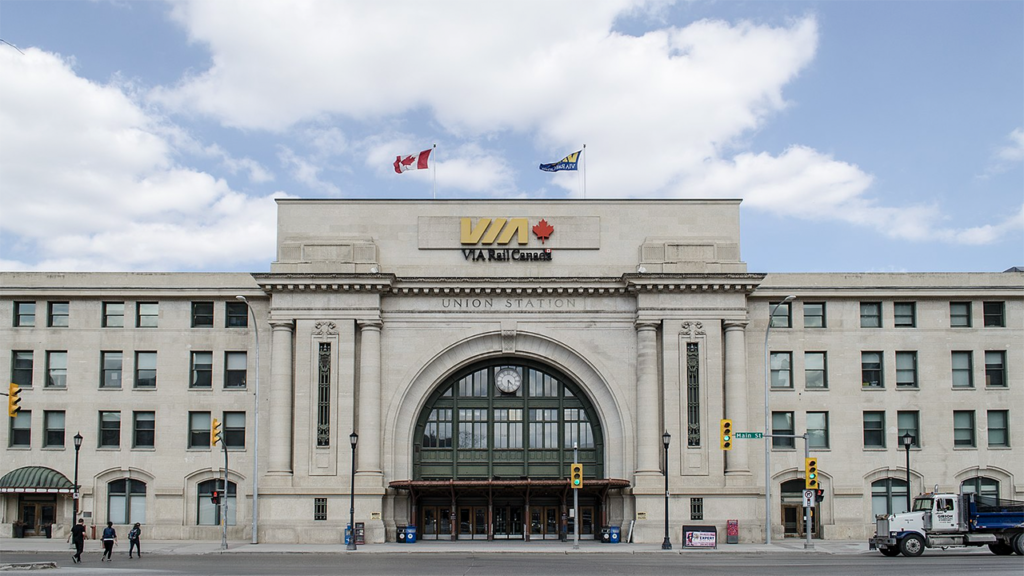
VIA Rail President and CEO Mario Péloquin and Board Chair Françoise Bertrand on Aug. 24 announced C$80 million in investments to upgrade four of the intercity passenger railroad’s 36 “heritage” stations and “ensure they reflect today’s standards.”
VIA Rail by 2025 will renovate Winnipeg Union Station, Vancouver Pacific Station, Halifax Station, and Gare du Palais in Québec City.
“These iconic stations embody the history of railroading, and by extension the creation of Canada, which we have a responsibility to protect,” said Mario Péloquin.
VIA Rail said it has invested more than $25 million at Winnipeg Union Station. Since 2020, it has modernized interior passenger platforms and created greater accessibility with the elevator and escalator upgrades and exterior passenger platform replacement, which, it noted, will be the first fully accessible platform on its long-distance and regional routes once completed at the end of the year.
All renovations to the station and train shed are being done within the guidelines of Parks Canada to respect the heritage characteristics of the 1911 building, according to VIA Rail. The Winnipeg Station achieved LEED gold certification in 2022, making it the second station in the VIA Rail network to have received this Canada Green Building Council credential.
“Our Winnipeg Union Station is a crucial point of our Western operations,” Françoise Bertrand said. “It plays an important role in our ability to deliver our mandate as it is part of the lifeline service to communities in Northern Manitoba and gives access to the iconic Canadian that travels between Vancouver and Toronto.”



